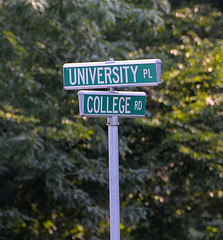Feds And Colleges Now Blacklisting Student-Aid Scammers

(afagen)
According to the Wall Street Journal, the Dept. of Education started tracking questionable applicants at the beginning of 2013, flagging those “students” who have received aid for three or more schools within the past year.
The feds then notify schools, who then request transcripts from the flagged applicants to show that they actually attended the classes for which they received aid.
Between 2007 and 2010, the estimated amount of Pell grant money given out in “improper payments” jumped from a little more than $400 million to around $1 billion. It’s since decreased slightly, but was estimated at $829 million for 2012.
Pell grants are a particularly tasty target for scammers, as the aid does not get repaid and requires no credit check. Once the money is paid to the school for tuition, the student can basically do with it as he pleases. So scammers are applying for Pell grants then using them at community colleges, where classes often only cost a fraction of what they do at other schools, thus leaving the “student” with plenty of leftover money.
“What we find are very poor students academically that are borrowing to the max, getting the maximum in their Pell grant and just going from school to school,” the director of financial aid at Anne Arundel Community College in Maryland tells the Journal. About 1.35% of his school’s 8,000 aid applicants were flagged as possible scammers.
Want more consumer news? Visit our parent organization, Consumer Reports, for the latest on scams, recalls, and other consumer issues.

